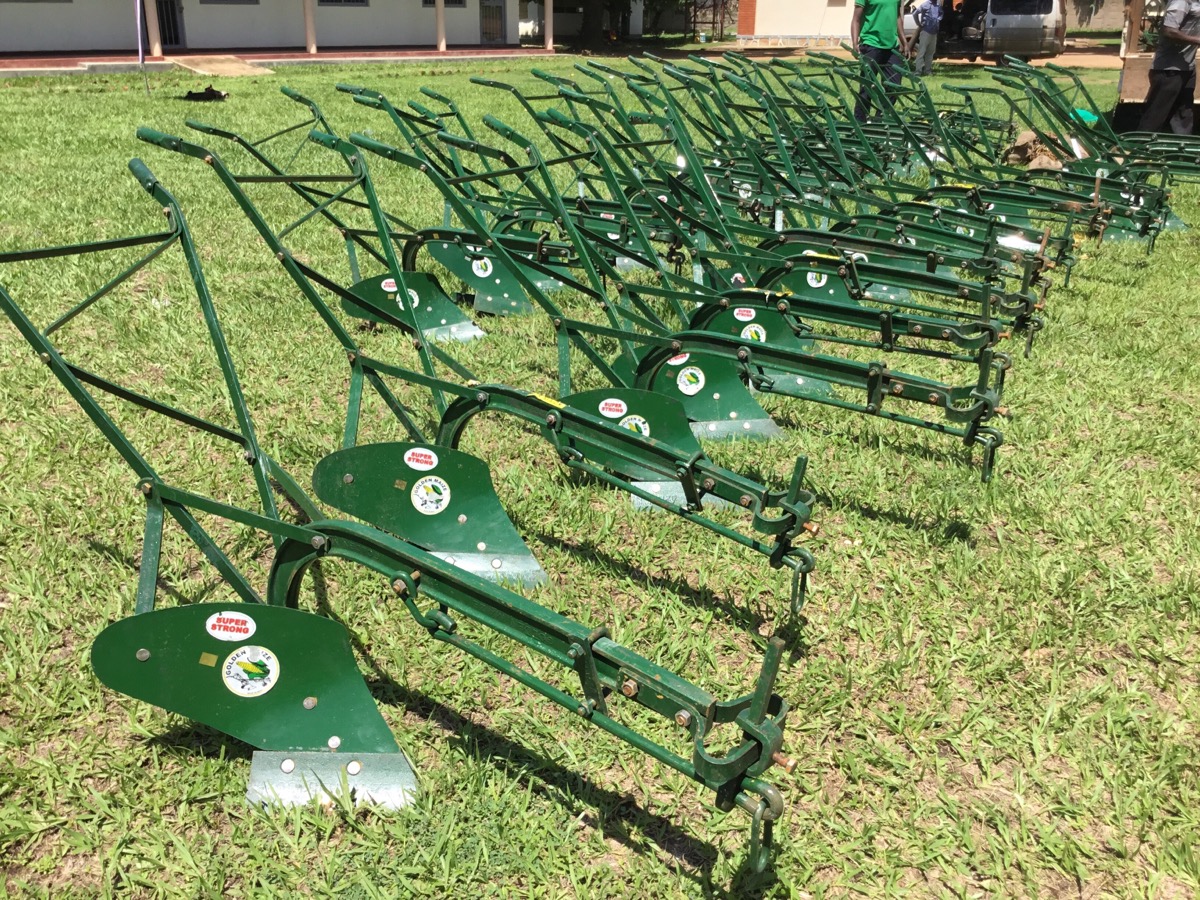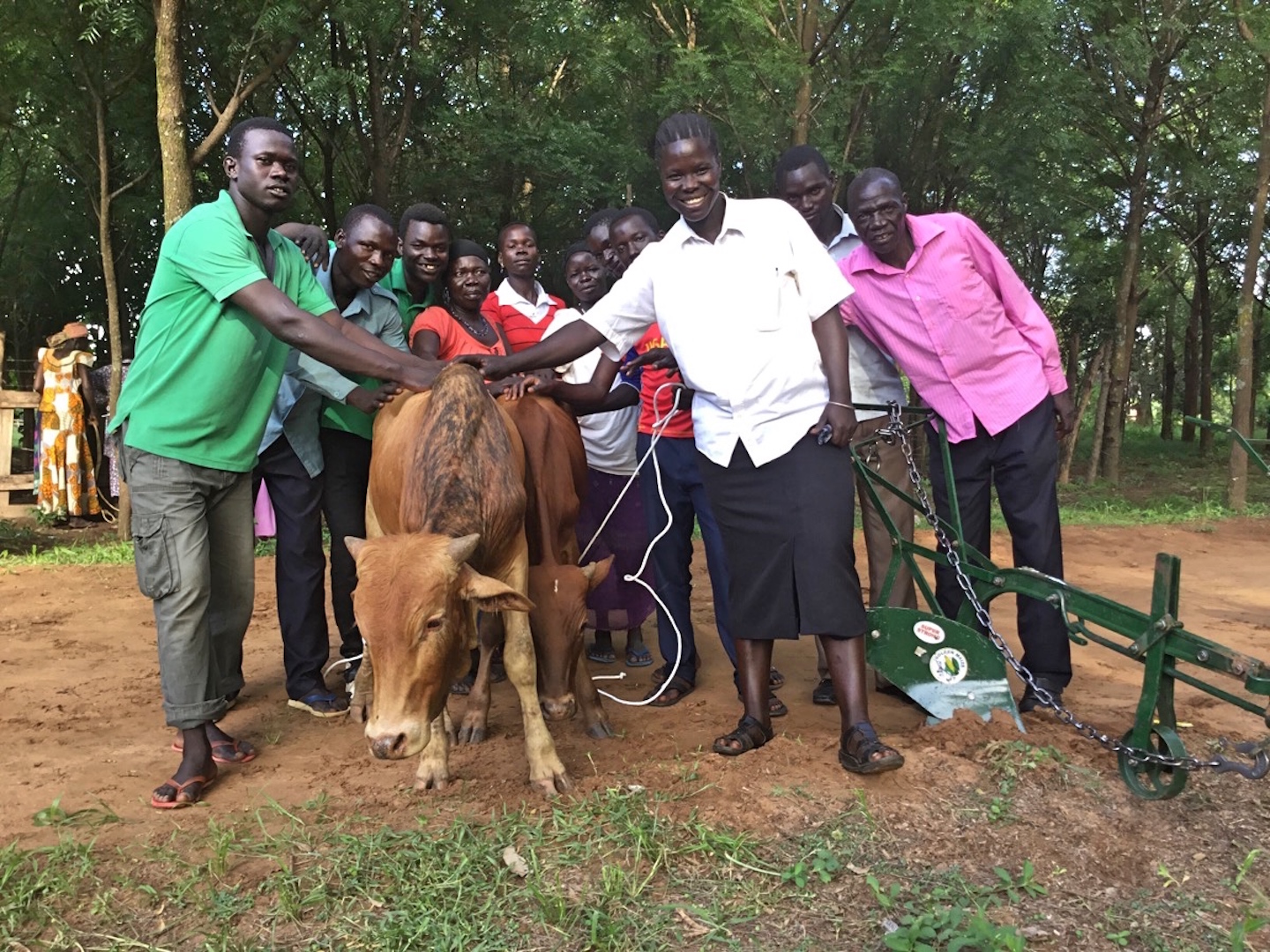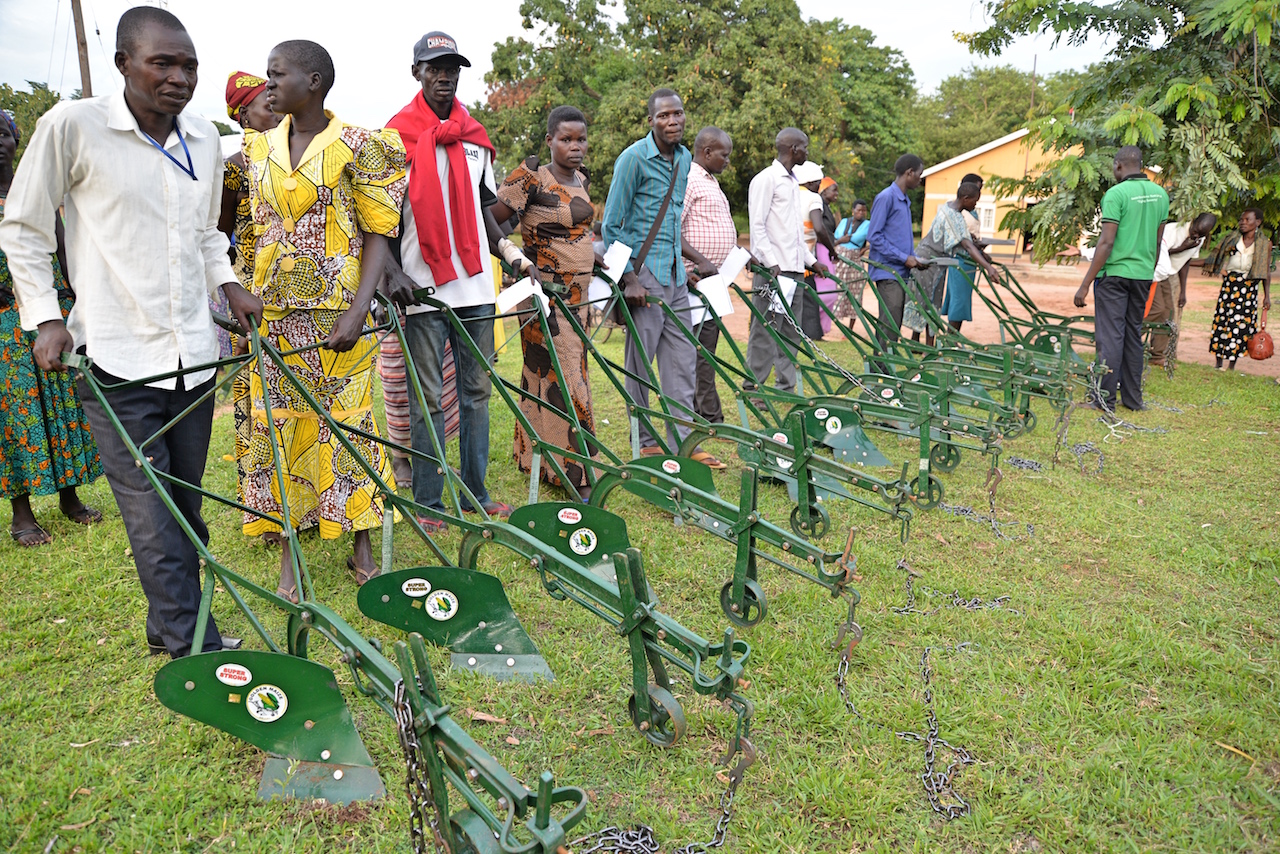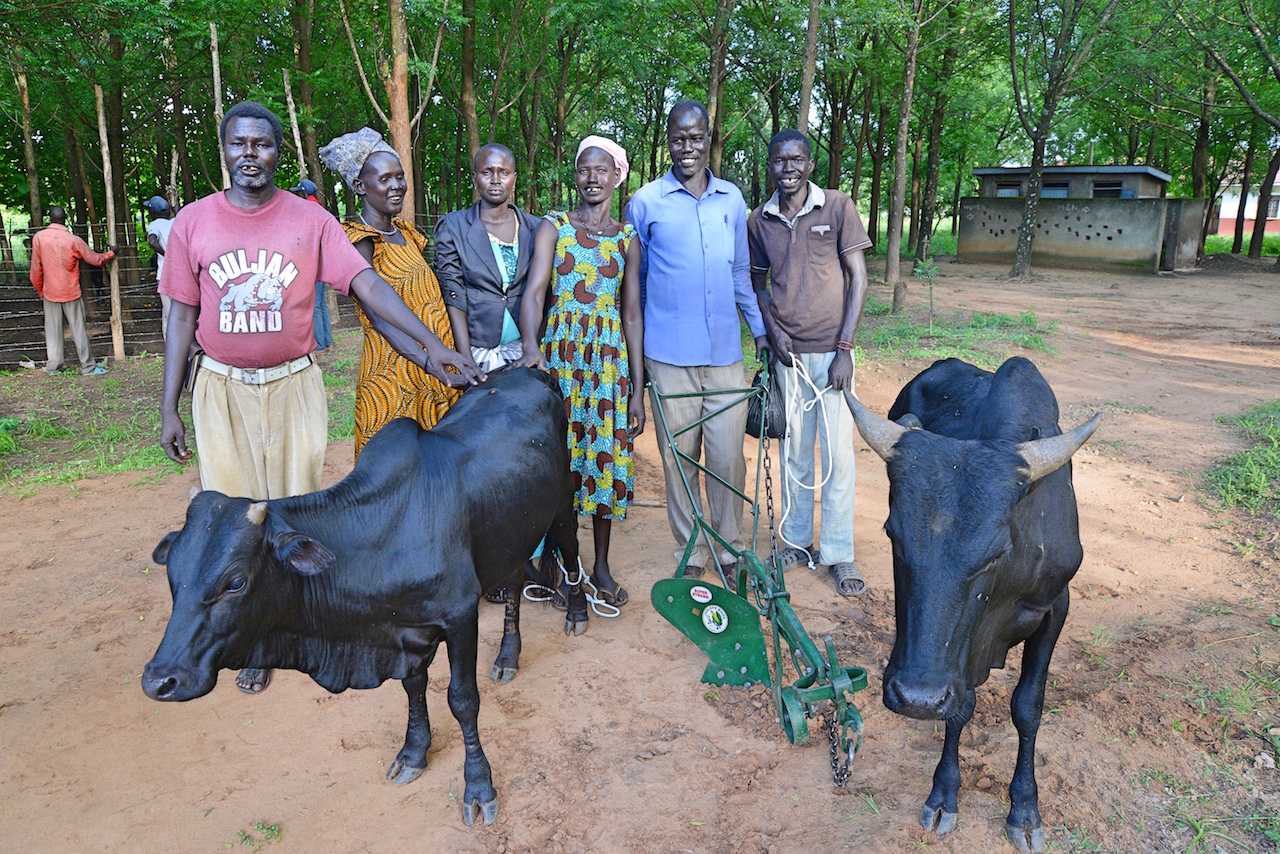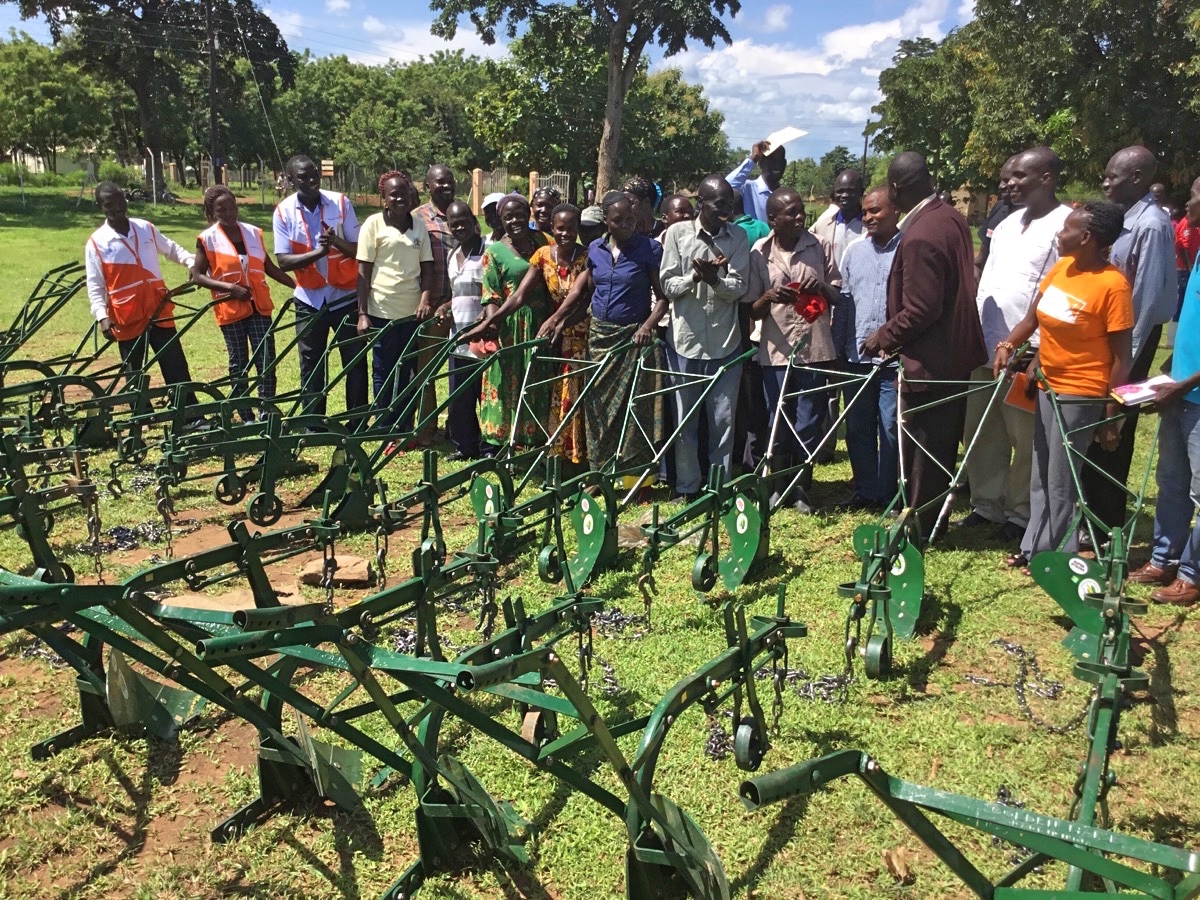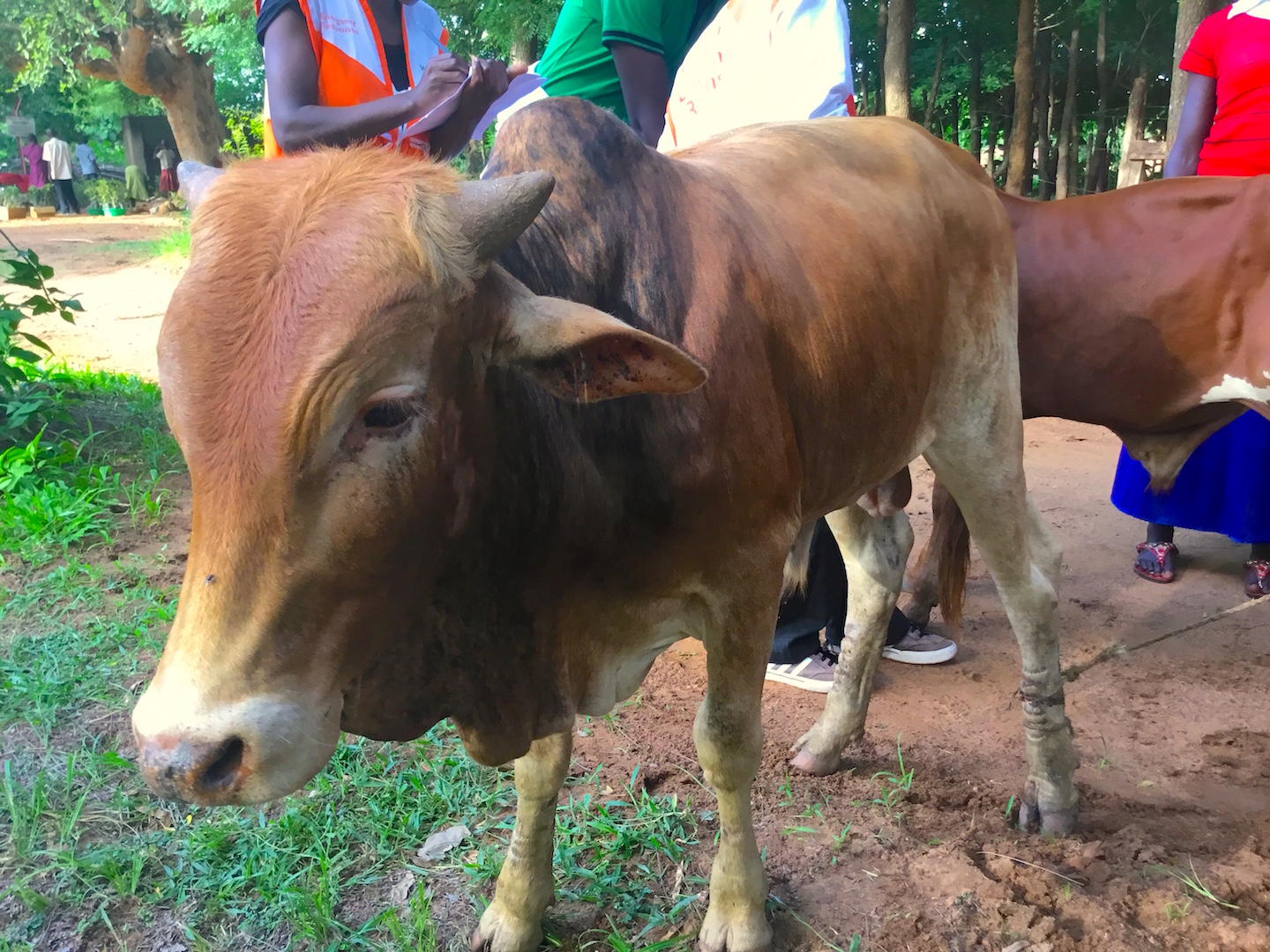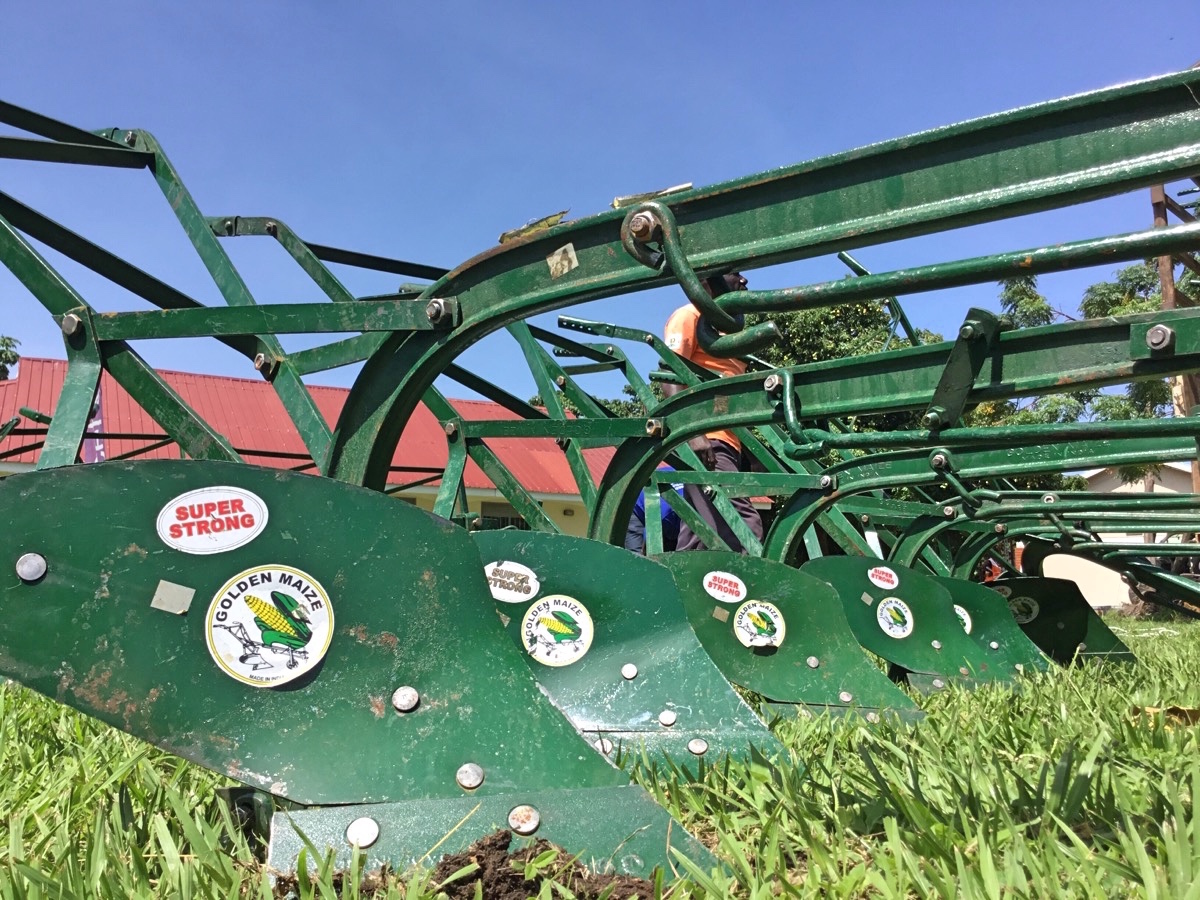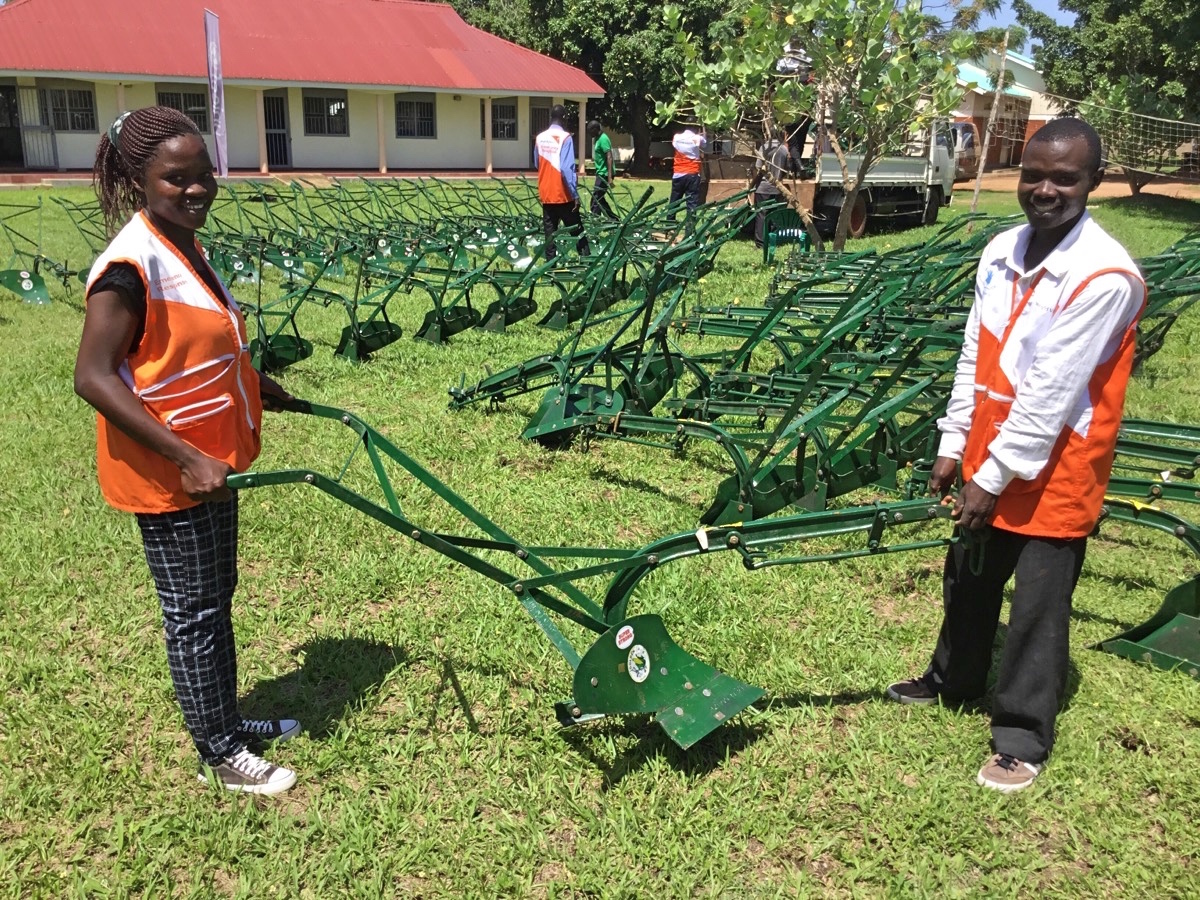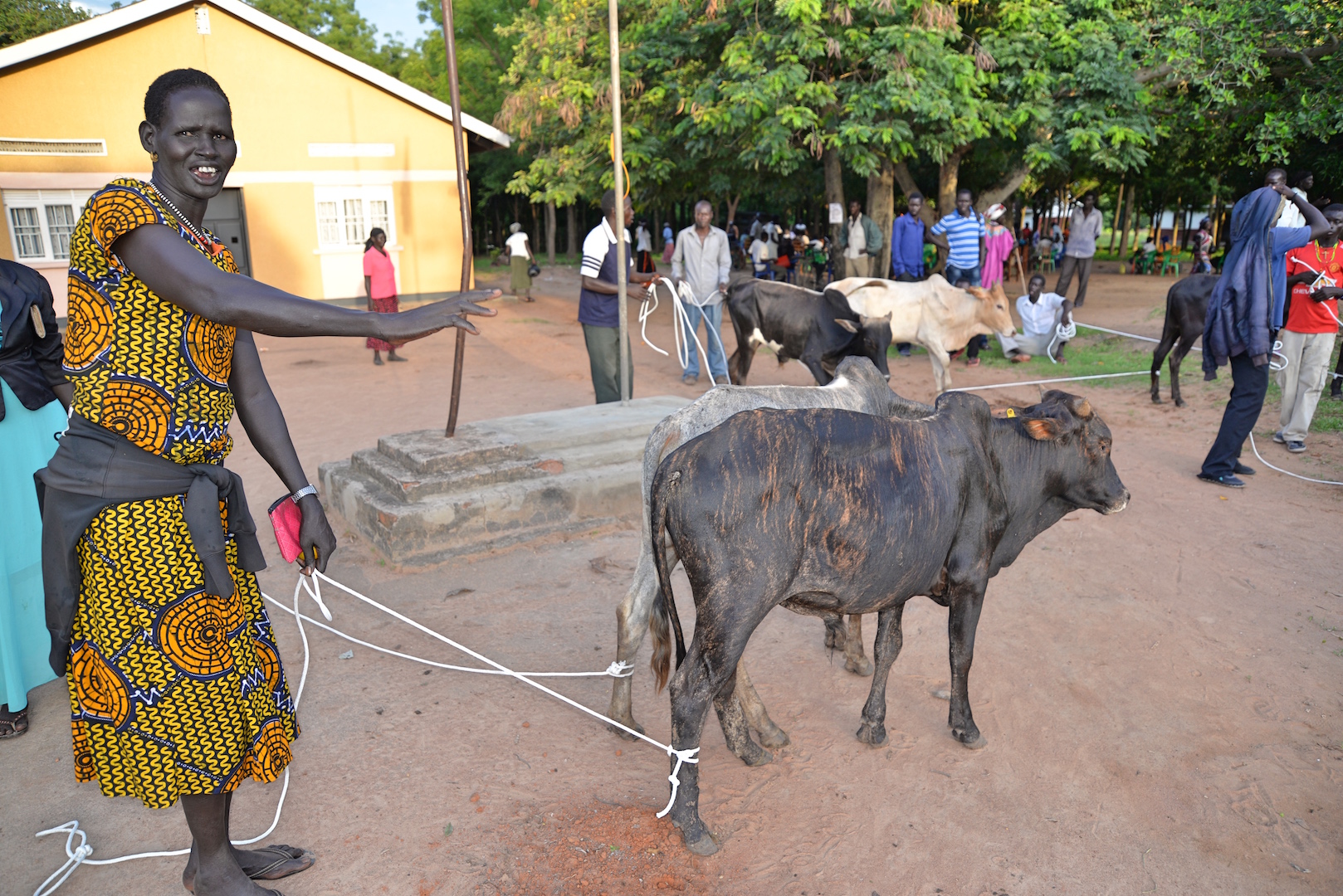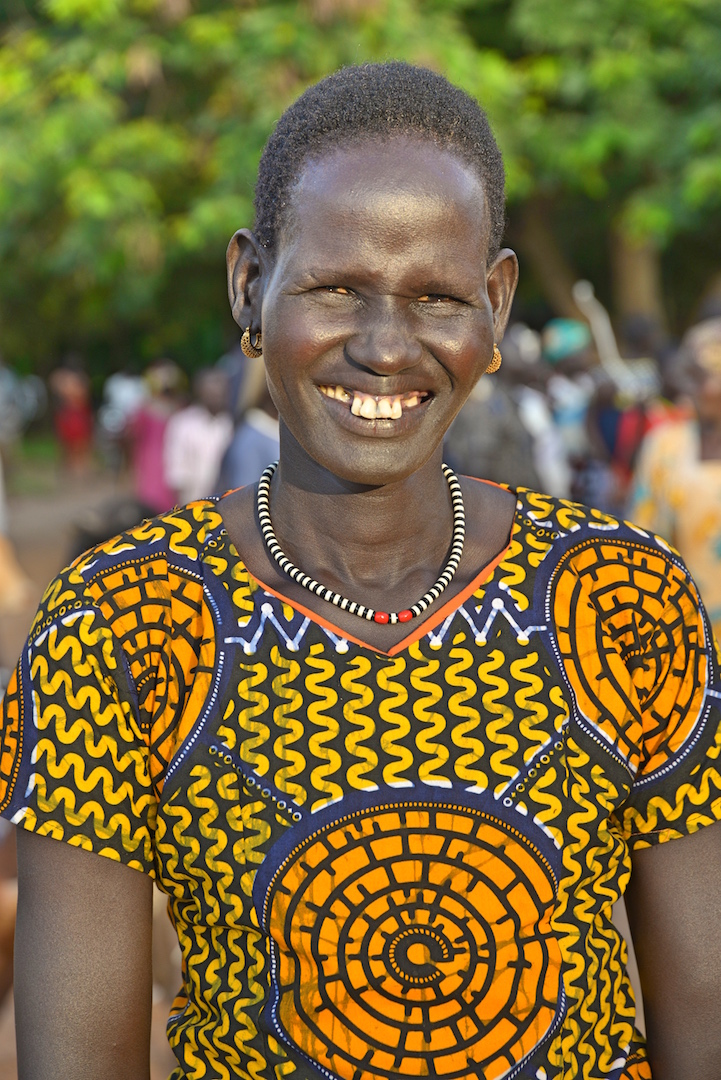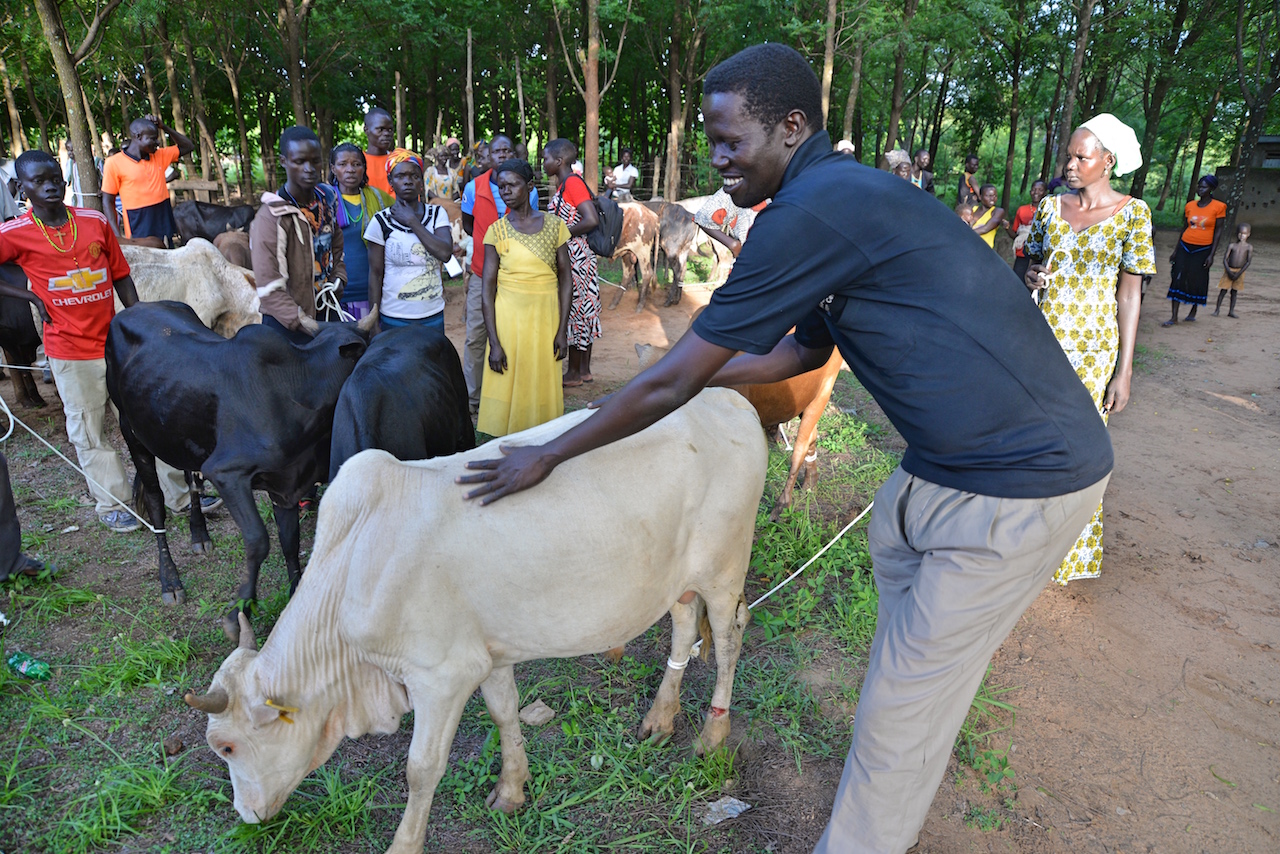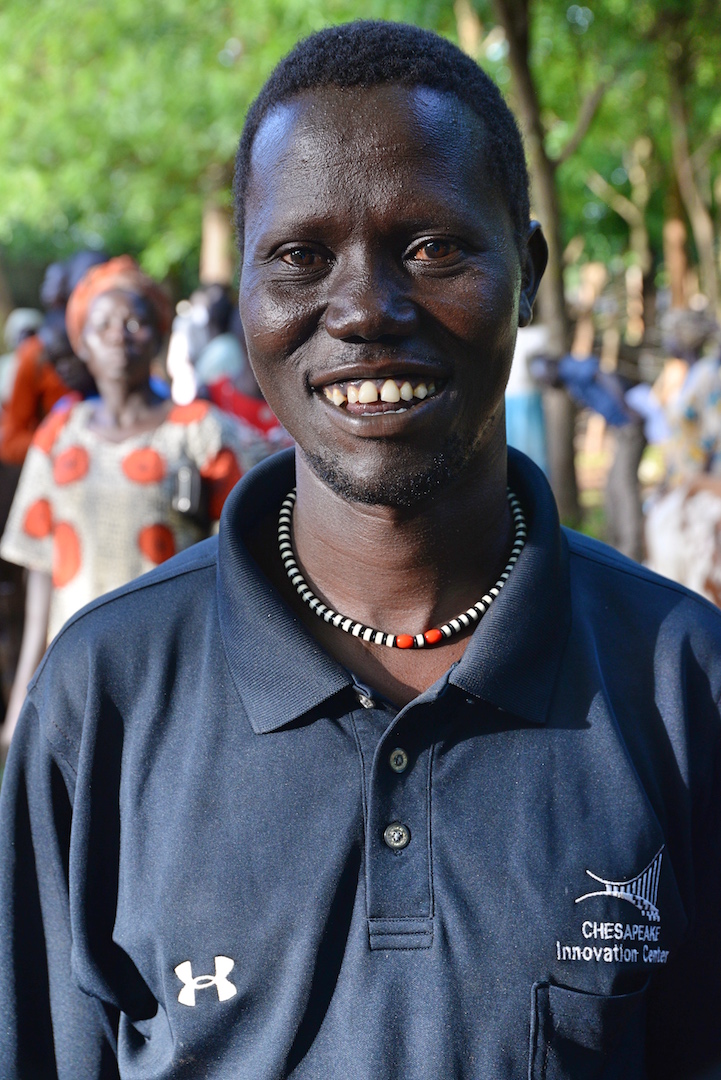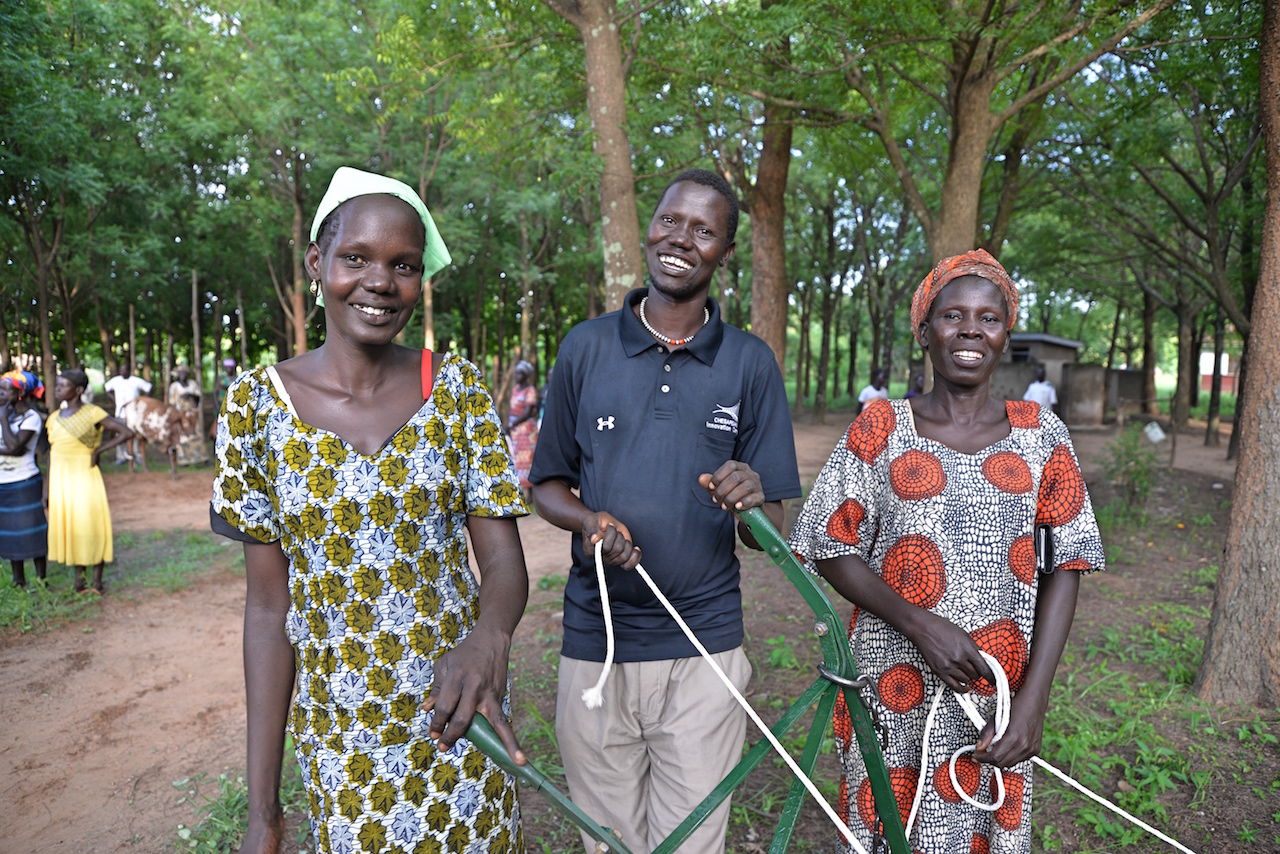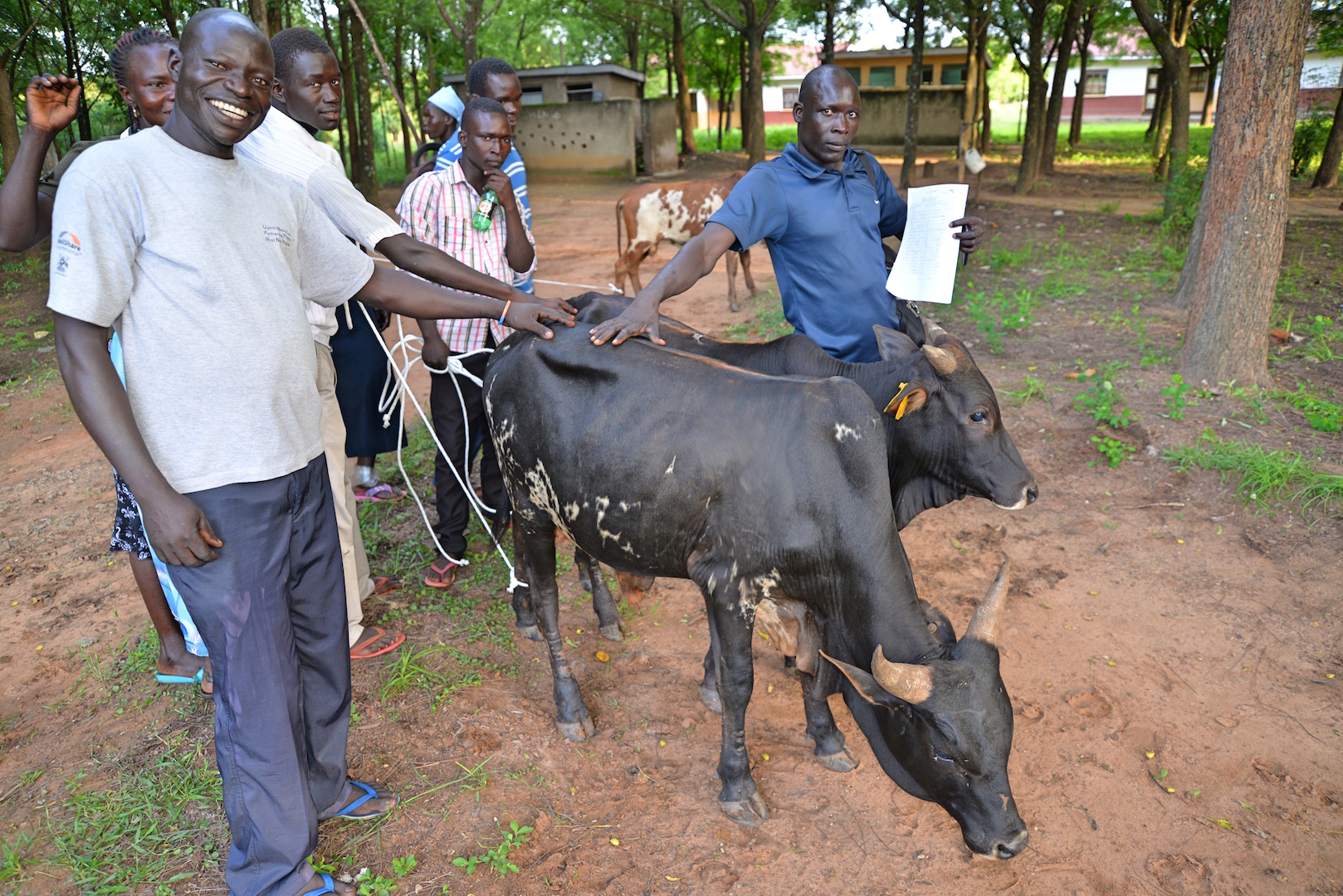Farming as a business in refugee communities
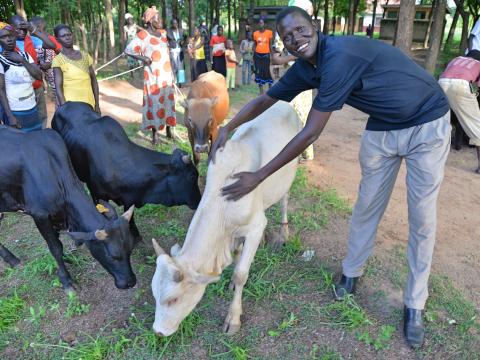
By Moses Mukitale, Communication Coordinator, West Nile Refugee Response
A total of 3,000 farmers from refugee and host communities of Adjumani district will now be able to open up their fields for the next planting season.
World Vision has supported 100 farmers’ groups by providing two bulls and an ox-plough to each. Of the 100 groups, 52 are from refugee settlements while 48 belong to the host communities. Each group is made of 30 members.
“We are going to grow maize, beans, cow peas and cassava. The bulls and ox-plough will help us reduce the workload. It costs over UGX150, 000 for a tractor to clear just one acre. So the animal traction is cost effective and easy to manage’’ remarked Moriku Charity, the head of one of the farmers’ groups.
‘’Previously we’ve been using hand-held hoes and this has been very tiresome and time consuming. You take long opening up the land and sometimes end up missing the planting season’’ Charity adds.
Partnering among refugees and host communities
World Vision tasked each group to work with its members and obtain farming land before receiving this support. Groups acquired land either through collaboration or renting.
Currently an acre of land is being leased at UGX50,000 (USD$18) for one farming season in Adjumani.
The Adjumani district local council authority welcomed the move, noting that it’s in line with the government of Uganda’s ‘REHOPE’ agenda of empowering both refugees and host communities.
Speaking at the handover ceremony at Dzaipi sub county offices in Adjumani, Moses Simba the Adjumani district Councilor reiterated the need for aid agencies to capture host communities in refugee empowerment programs.
‘’We’ve managed to stay in peace with our brothers and sisters from South Sudan. It’s thus very important that when any empowerment program comes on board, both parties benefit. As a district we do not have enough funds to even support the host communities alone. So this project is directly addressing the unfunded needs of the district,’’ noted Mr. Moses Simba.
Adjumani district is currently home to some 239,335 refugees from South Sudan, and over 380,000 nationals. Agriculture is the backbone of Adjumani District's economy and the district boasts of some of the most arable soils in northern Uganda.
Improving farming practices in Adjumani
Geoffrey Ocen, the World Vision livelihoods manager in West Nile says the aim of the programme is to see refugees and host communities working together to increase their household incomes and become self-reliant.
‘’This project will help communities shift from subsistence farming to profitable modern agricultural practices capable of ending household poverty. We’ve trained them on effective utilization of animal traction. Beyond using it on their farms, the animals and ox-plough can also be rented out to community members for an extra income. So our long term goal is to see this support benefiting hundreds of other communities. These communities should now produce enough food for both domestic consumption and commercial purposes.’’ Explains Geoffrey Ocen.
Geoffrey adds that the oxen will be trained and kept for at least three months before they can begin to work in the fields. This will enable the farmer’s master animal habits like how to communicate to them plus their care and maintenance.
Before selection, the animals were first inspected and verified by the Adjumani district veterinary officer Dr. Okello Ngom David. In his remarks to the farmers, he encouraged them to ensure that the animals are frequently inspected by veterinary doctors in order to keep them in good shape.
Getting started immediately
Abraham Kuof, 29 years old, is the chairperson of ‘Good Luck Farmers’ Group’, a 30-member refugee only group in Ayillo Refugee settlement.
Before displacement to Uganda, Abraham was working as an agriculture officer in the agriculture ministry of South Sudan. But that is long ago, all his large barns and livestock are no more. He now has to start all over again. His group members are looking up to him for their success.
‘’We’ve managed to secure 10 acres of land from the host community. We rented five acres and the rest were leased out to us for free for two planting seasons. I have a lot of experience in farming and so do many of my other group mates. I had 10 acres of land back home and I was using animal traction. My group will benefit a lot from my experience.’’ Abraham, a father of three explains.
Abraham’s group has decided to plant soy bean, maize and simsim.
How does animal traction work?
Animal traction is the use of animals such as bulls, oxen, donkeys, mules and horses to assist farmers in carrying tasks, such as ploughing, harrowing, planting, ridging, weeding, mowing, and harvesting.
“In Adjumani, ox ploughing is mainly used for tilling land and for weeding. The oxen are used to pulling carts that transport manure or crop yields. This approach is helpful to small-scale farmers as it helps them increase their crop yields as ploughing is done faster than when a farmer uses a hand hoe. It also provides employment and transport, and also promotes food production hence increased food security and household incomes,” explained World Vision’s Geoffrey Ocen.
